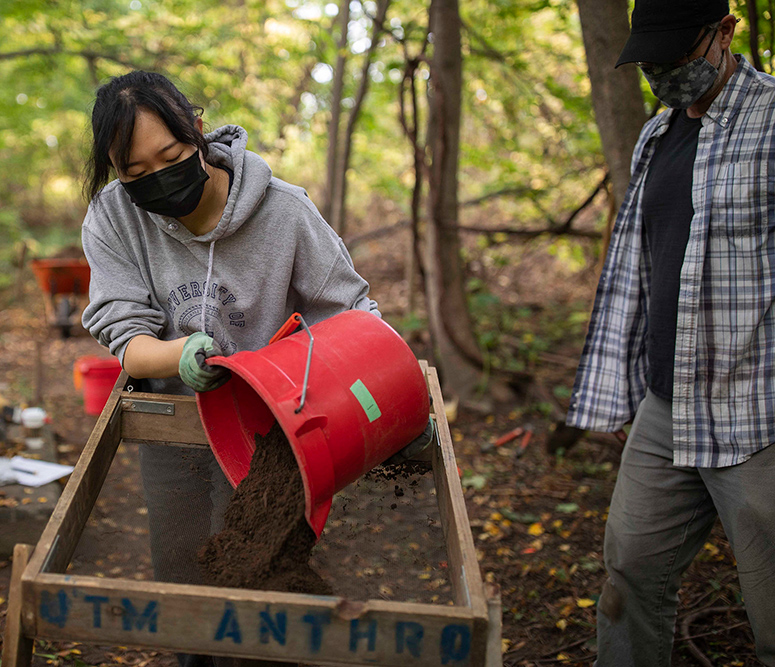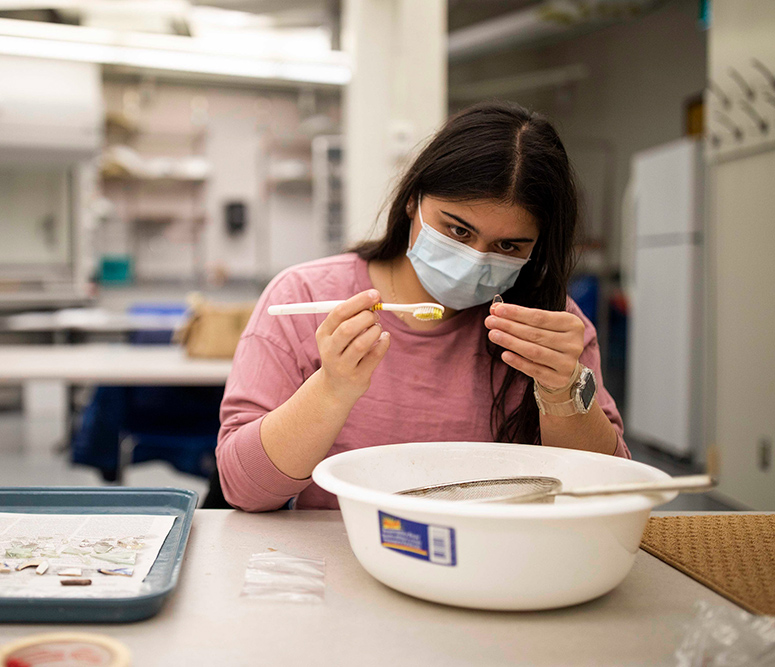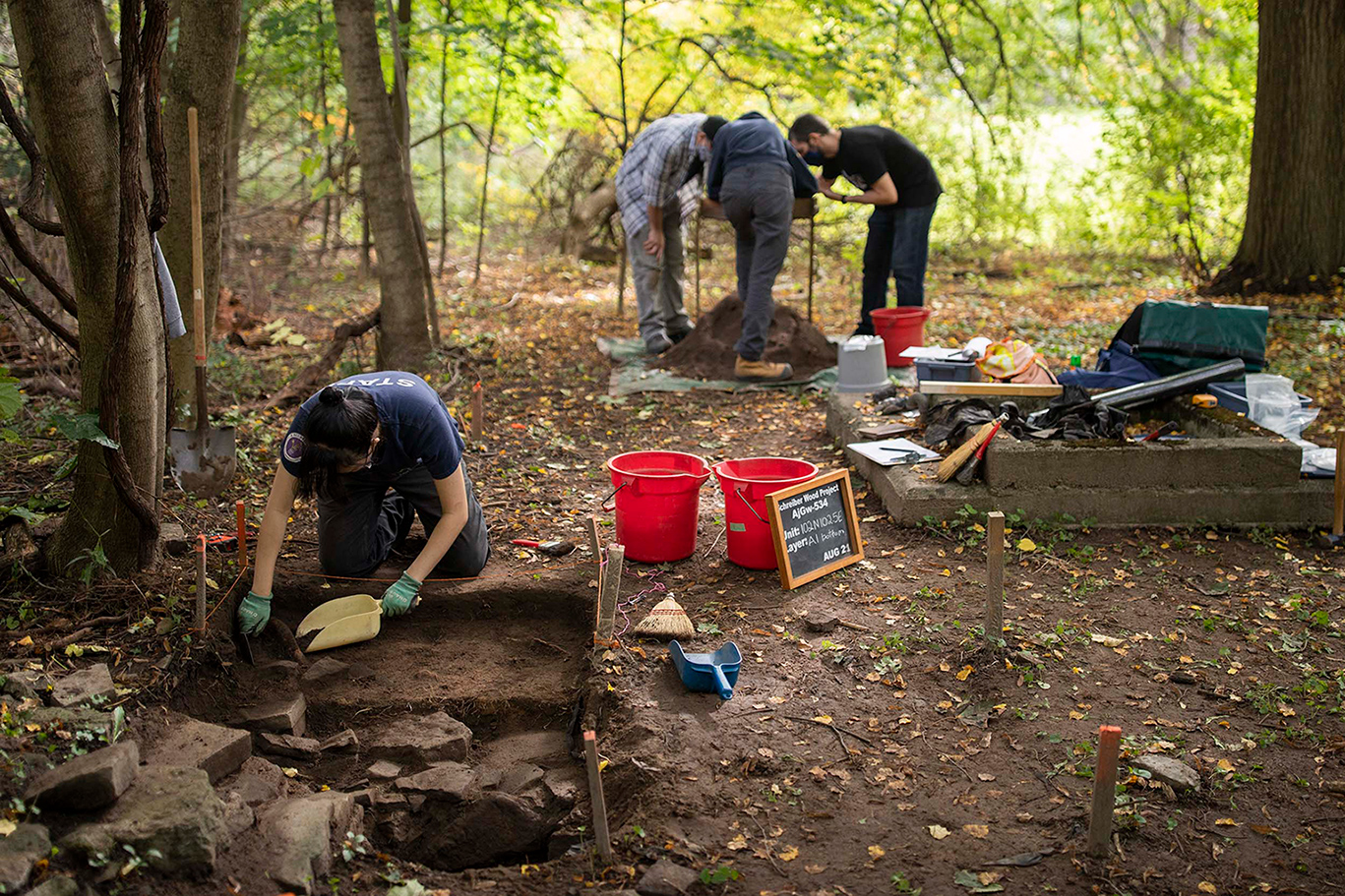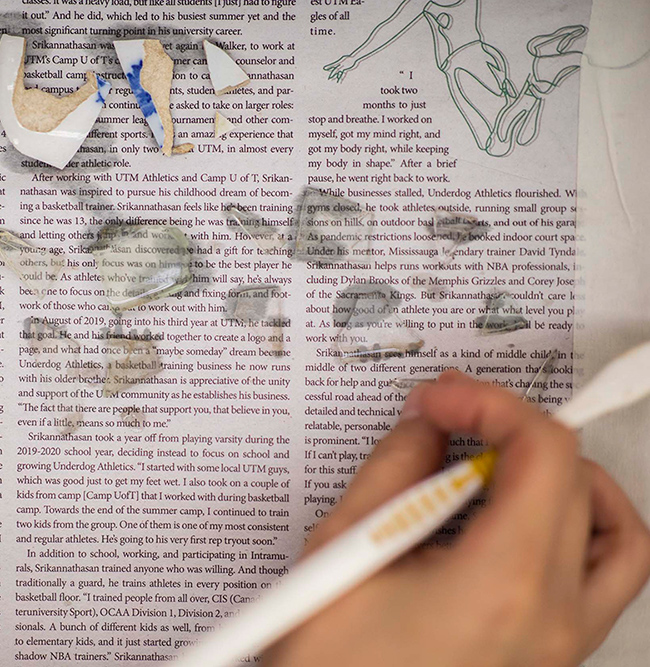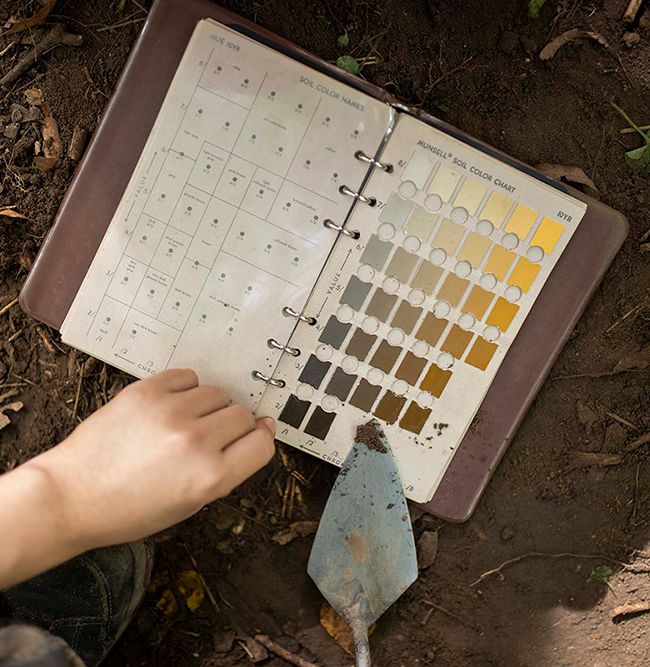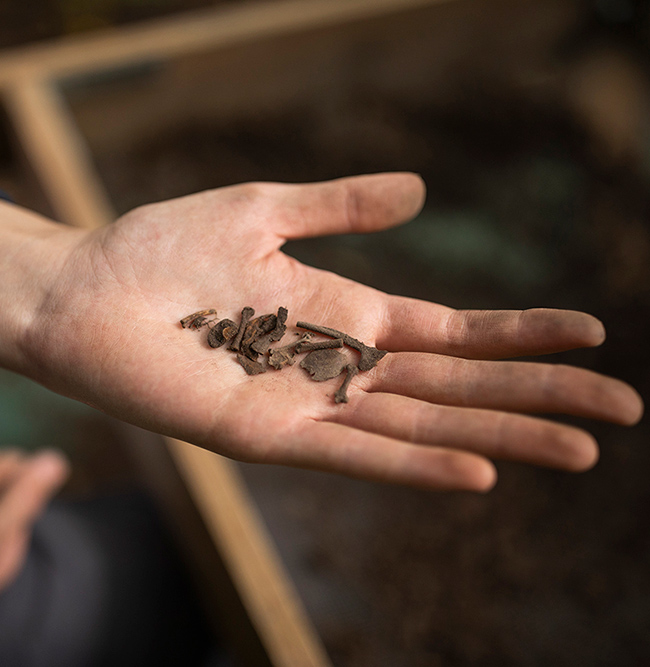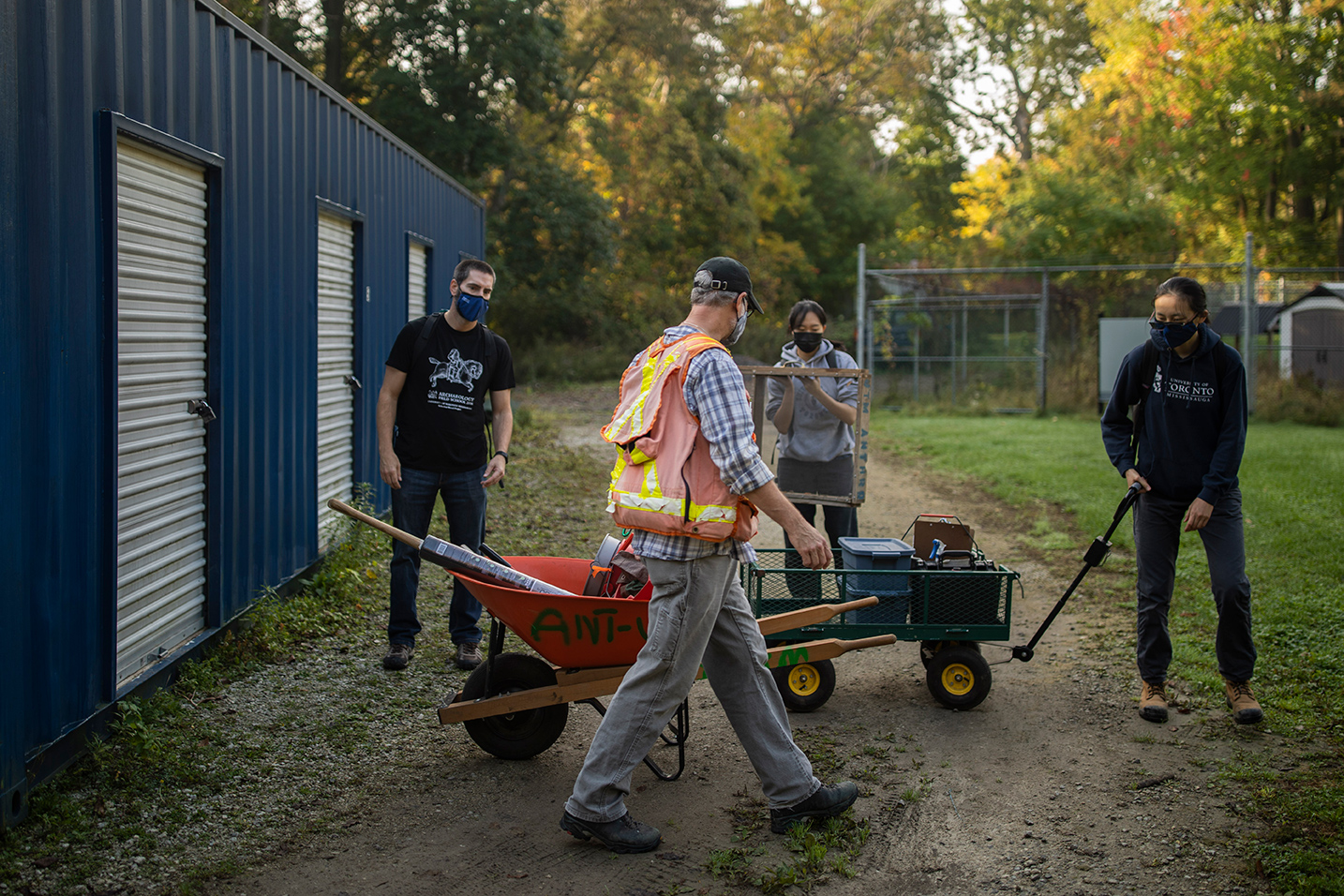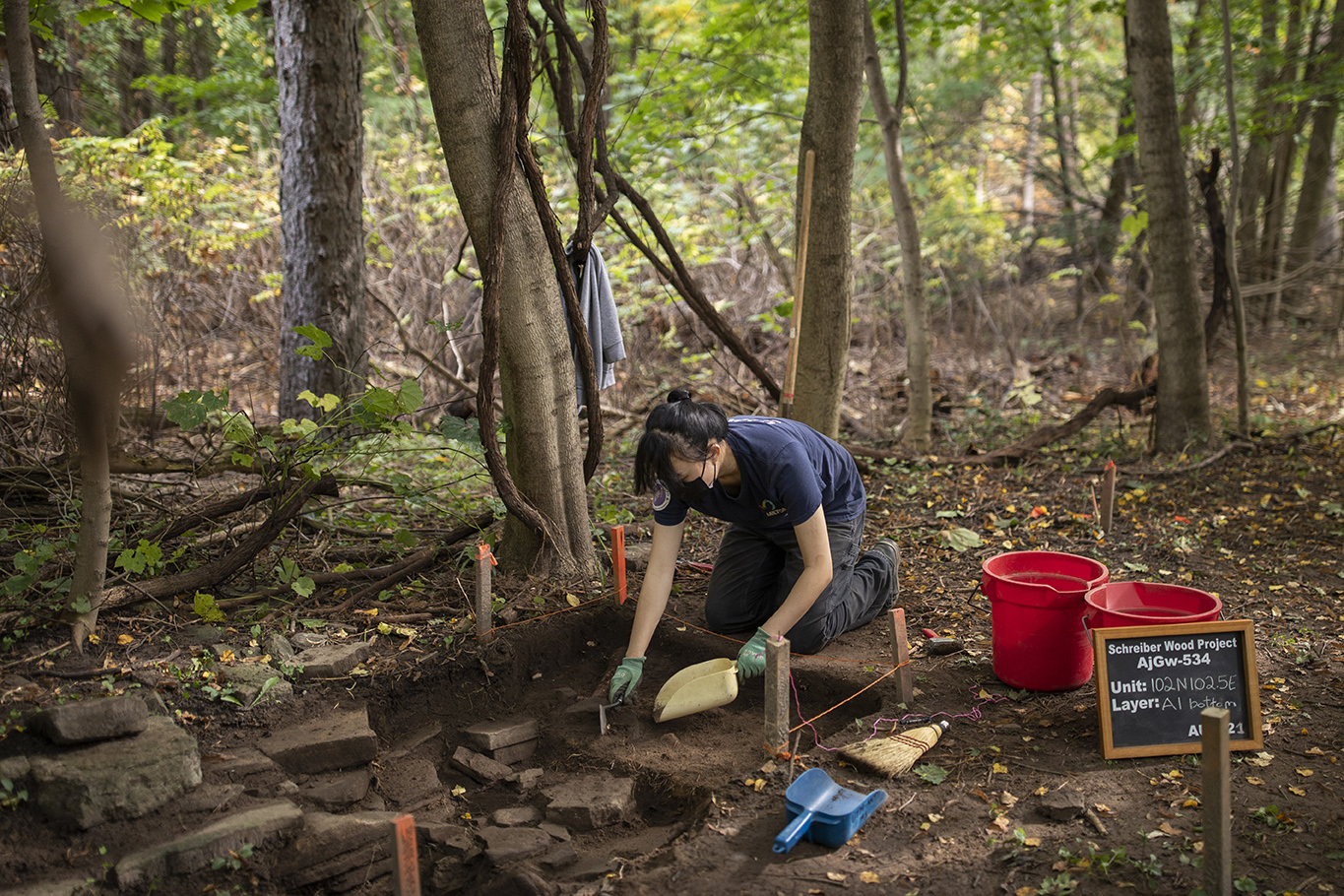Each summer, about two dozen U of T Mississauga students take part in an archeological field project on campus, digging into local history to help solve the mystery of a house lost to time.
Since 2013, the project has given upper-year anthropology students hands-on experience with compasses and trowels as they look for material remains of a family that once owned the property that makes up the north end of campus.
In the 1800s, the Schreiber estate boasted three large houses: Lislehurst, Iverholme and Mount Woodham. Lislehurst currently serves as the principal’s residence. The initial idea behind the field school, taught by U of T Mississauga anthropology professor Michael Brand, was to find the locations of the other two houses.
Iverholme burned down in 1913, leaving behind a stone foundation that was quickly identified. The fate of Mount Woodham – and its location on the property – remain a mystery. About nine years ago, Brand and his students uncovered a stone foundation, but it wasn’t big enough to belong to Mount Woodham. Brand suspects it’s the remnants of a barn.
The field school extends beyond the search for the house to learning about the Schreibers’ lives and how they integrated themselves into the community, as well as their influence on the cultural landscape. For Yunfei Lin, a fourth-year anthropology student who took the field school in 2020 and 2021, this additional research involved excavating the barn wall and digging into a midden heap (a domestic dump site) that contains residential artifacts such as medicine bottles and toy soldiers. “Hearing the professor talk about excavation and soil stratigraphy is one thing, but experiencing it is totally different,” says Lin. She credits the field course for landing her an archeological position after she graduates this spring.
Brand, meanwhile, plans to open additional excavation sites around the campus to keep the field school going for future students – and to find more clues to where Mount Woodham once stood. “It is a constant mystery,” he says.
Unearthing History in the Forest
For nearly a decade, UTM students have searched for artifacts that might reveal an archeological secret
